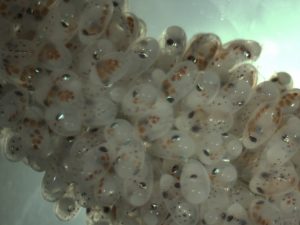Video credit: Patricia Martin Cabrera
Review: Abdel Rahman El Gamal (Founder of the video channel)
This video was filmed during a dive at the Blue Hole, Dahab (Egypt).

One should look carefully to identify this beautiful specimen of common octopus (Octopus vulgaris) with its marvelous green color that makes the animal blends with its surroundings. Using camouflage is considered among the unique traits which the animal adapts in order either to not to be detected or not to be seen at all. If interested, more information on the biology and habits of this animal could be accessed on: (http://fishconsult.org/?p=9100) on this website.
The “Blue Hole” diving location is located a few Kilometers north of Dahab, Egypt on the coast of the Red Sea. This area has a rich and unique marine life and reef. The “Blue Hole” itself is a submarine sort of cave, around 130m deep. There is a shallow opening around 6m deep, opening out to the sea and a 26-m tunnel, known as the arch, the top of which is 52m. The Blue Hole itself and its surrounding area have an abundance of coral and reef fish.
The Blue Hole is known for the number of diving fatalities. Accidents are frequently caused when divers attempt to find the tunnel through the reef (Arch) connecting the Blue Hole and open water at about 52m depth.
Even though, the Blue Hole in Dahab is considered a challenging and maybe a dangerous diving site, it attracts divers who seek adventures. Divers who decide to experience the famous Blue Hole need to be well informed, and well prepared especially The bottom of the hole lies at 100+ meters and you will need great buoyancy skills and enough experience to decent in a controlled manner and to stay within the limits divers are trained to.












